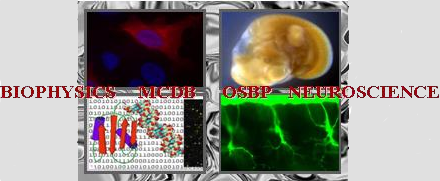Poster abstracts
Poster number 89 submitted by Timothy Faw
Region specific inflammatory responses remote to thoracic spinal cord injury
Timothy D. Faw, PT, DPT, NCS (Neuroscience Graduate Program, The Ohio State University), Diana M. Norden, PhD (Center for Brain and Spinal Cord Repair, The Ohio State University), Rochelle J. Deibert (Center for Brain and Spinal Cord Repair, The Ohio State University), Lesley C. Fisher (School of Health and Rehabilitation Sciences, The Ohio State University), D. Michele Basso, EdD, PT (School of Health and Rehabilitation Sciences, The Ohio State University)
Abstract:
Spinal cord injury (SCI) produces a toxic inflammatory microenvironment that negatively affects plasticity and recovery. Recently, we showed microglial activation, infiltration of bone marrow-derived myeloid cells, and increased cytokine production in the remote lumbar cord within the first 24hrs after thoracic SCI (T9). At the same time, cervical regions were protected from this robust central and peripheral inflammatory response. Importantly, inflammation and myeloid cell infiltration may impede exercise-based recovery. The purpose of this study was to characterize the regional specificity of inflammatory responses in remote spinal cord regions after thoracic SCI. Mice received a 75kdyn contusion at T9 using the Infinite Horizons device with inflammation measured at cervical and lumbar sites 1-14 days later. Within 24hrs, CD11b+/CD45high myeloid cells infiltrated the lumbar but not cervical cord. Lumbar but not cervical localization of GFP+ bone marrow derived myeloid cells using chimeric mice confirmed regional differences. Further, quantitative PCR identified a pro-inflammatory profile of lumbar infiltrating macrophages at 24hrs with increased expression of inflammatory cytokines (TNFα), chemokines (CCL2), and adhesion molecules (ICAM). The number of peripheral monocytes in the lumbar cord was attenuated by 14 days. Conversely, central signs of inflammation and gliosis (Iba-1, GFAP) remained increased at 14 days only in the lumbar cord. These data suggest that a toxic microenvironment driven by central and peripheral immune responses develops in the remote lumbar cord after SCI. Interestingly, the cervical cord is protected from inflammation which may render it uniquely capable of adaptive plasticity early after SCI when the lumbar microenvironment renders training ineffective. Future studies will determine the cervical response to neurorehabilitation after SCI.
References:
Hansen, C. N., Fisher, L. C., Deibert, R. J., Jakeman, L. B., Zhang, H., Noble-Haeusslein, L., et al. (2013). Elevated MMP-9 in the Lumbar Cord Early after Thoracic Spinal Cord Injury Impedes Motor Relearning in Mice. Journal of Neuroscience, 33(32), 13101–13111. http://doi.org/10.1523/JNEUROSCI.1576-13.2013
Detloff, M. R., Fisher, L. C., McGaughy, V., Longbrake, E. E., Popovich, P. G., & Basso, D. M. (2008). Remote activation of microglia and pro-inflammatory cytokines predict the onset and severity of below-level neuropathic pain after spinal cord injury in rats. Experimental Neurology, 212(2), 337–347. http://doi.org/10.1016/j.expneurol.2008.04.009
Keywords: Spinal Cord Injury, Inflammation, Remote
